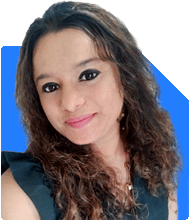Hello Sir,kindly review my MF portfolio-- Parag parikh flexicap,Sbi Contra,Hdfc small cap,Nippon midcap,Icici large and midcap.Current value is 5.5 lacs,Want to collect 1.5cr in next 15 years.Please suggest if need to change any funds or these looks good.All are direct plans.
Ans: You have chosen a good mix of mutual funds. Your selection shows careful thought and awareness. It reflects your interest in wealth creation through equity funds. A portfolio of Rs 5.5 lakhs growing to Rs 1.5 crore in 15 years is a bold and achievable goal. With discipline and smart allocation, you can surely reach it. Let us assess your present portfolio and see if any refinement can enhance results.
» Appreciation of your efforts
You have made a good start by investing early. Choosing diversified equity categories shows clarity of vision. Each fund type you have selected serves a unique role. This helps spread risk and increase long-term growth potential. Your commitment towards long-term investing is the real strength here. Staying invested for 15 years gives time for compounding to work beautifully.
Also, investing through direct plans shows that you have taken charge of your money. You are taking initiative, and that is admirable. Many investors hesitate to even start. You have already done the hard part by beginning and choosing a diversified portfolio.
» Portfolio overview
Your portfolio includes funds from various segments – flexicap, contra, small cap, mid cap, and large & mid cap. This is a good combination for diversification. You have exposure across market caps and investing styles. The flexicap brings balance and adaptability. The contra fund adds a contrarian approach that can work well during market cycles. The mid and small caps bring higher growth potential. The large & mid cap fund offers stability and moderate returns.
So, your portfolio covers almost all essential categories for long-term wealth building. However, it may slightly tilt towards the aggressive side due to small and midcap exposure. For a 15-year goal, that is still fine. But you must manage it actively and review once a year.
» Assessment of current allocation
Right now, your funds are equity-heavy. That means higher volatility but also higher reward. Since your goal is long-term, this is acceptable. But small and midcap funds can fluctuate widely. You need to stay calm during market corrections. Avoid panic selling. The flexicap and large & mid cap parts will help balance the ride.
Over the next few years, as your corpus grows, consider slowly shifting a small part towards less volatile categories. This can protect gains when your goal nears. But for the first 10 years, staying with equity-oriented allocation is ideal.
» Evaluating diversification and overlap
Sometimes investors hold too many similar funds unknowingly. You have five funds covering different categories. But inside these funds, some stocks may overlap. For example, your flexicap and large & mid cap fund may hold common top companies. The overlap may slightly reduce diversification benefit.
A Certified Financial Planner can study the stock overlap percentage for you. If overlap is above 40%, a few adjustments may help. However, if the overlap is moderate, you can continue. Avoid having too many funds; four to five are enough. You are already within that range.
» Understanding risk-return balance
Each category you hold has a different risk profile. The flexicap fund provides flexible allocation and smoother performance. The contra fund follows a value approach and can do well in sideways markets. The midcap and small cap funds are more volatile but give strong returns in bullish cycles. The large & mid cap fund provides balance between growth and stability.
Together, these funds create a blend of stability, growth, and value. However, do not expect all funds to perform at the same time. Their cycles differ. When small caps fall, flexicap or contra may perform better. Patience and diversification will even out results over time.
» Assessing the suitability for 15-year wealth goal
To reach Rs 1.5 crore in 15 years, you will need consistent investments. Your existing corpus is a strong base. But to reach such a target, regular monthly SIPs are necessary. Equity funds perform best with SIPs. Market volatility helps through rupee cost averaging.
You already have a 15-year time horizon. That gives enough time to absorb short-term fluctuations. Continue your SIPs with yearly increases, even by 10–15%. This alone can make a big difference. Compounding works best with time and discipline.
» Insight on direct plans
You mentioned that all your funds are direct plans. While direct plans look cheaper due to lower expense ratio, they come with hidden drawbacks. Managing a portfolio alone can be stressful. Markets keep changing. Rebalancing, reviewing overlap, and tracking tax rules require time and skill.
Direct plans do not give you personalised guidance. If you miss rebalancing at the right time, returns can fall. A Certified Financial Planner (CFP) or Mutual Fund Distributor with CFP qualification provides expert monitoring. They help you stay aligned with your goals, manage risk, and make timely course corrections.
Regular plans, though slightly costlier, include this guidance. The fee difference is small compared to the value of proper planning and behavioural support. Many investors lose more by taking wrong actions than by paying advisory charges. Hence, regular plans through a qualified CFP often give better long-term results.
» Tax efficiency and new rules
As per the new capital gains rule, when you sell equity mutual funds, long-term capital gains (LTCG) above Rs 1.25 lakh are taxed at 12.5%. Short-term gains (STCG) are taxed at 20%. So, try to keep your holding period above one year to get lower tax rate.
Since your goal is 15 years away, most of your gains will be long-term. You can plan redemptions smartly to optimise tax. Avoid frequent switching between funds. It creates short-term gains and unnecessary tax.
» Monitoring and reviewing your portfolio
Even the best portfolio needs regular reviews. Once a year is ideal. Check if each fund is still performing above its category average. If any fund consistently lags for 3 years, consider replacing it. Do not react to short-term underperformance.
Also, review your asset allocation yearly. If small caps become too large a portion after big rallies, rebalance slightly towards balanced categories. This ensures steady risk levels.
You should also track changes in fund management and strategy. A fund that changes its manager or investment style may behave differently later. Stay updated.
» Behavioural discipline in investing
The biggest factor in reaching Rs 1.5 crore is not the market but your discipline. Do not stop SIPs when markets fall. That is when you buy more units cheaply. Avoid checking NAVs daily. Market volatility is normal.
Have faith in your chosen funds and your time horizon. The key is patience. Even an average portfolio gives great results when held with consistency.
» Importance of increasing SIP amount
If your income rises every year, increase your SIP amount. This is called a step-up SIP. A small 10% yearly increase can multiply your final corpus. It helps you stay ahead of inflation and build wealth faster.
Make this increase automatic if possible. Most platforms allow it now. This single habit can help you comfortably reach Rs 1.5 crore or even more.
» Role of goal clarity
You mentioned a target of Rs 1.5 crore in 15 years. Define what this goal is for—retirement, child education, or financial freedom. When the goal is clear, planning becomes easy. It helps you decide the right asset allocation and withdrawal strategy later.
You can also plan sub-goals within 15 years. For example, after 10 years, check progress and decide if adjustments are needed. Periodic milestone reviews give motivation and control.
» Inflation and real return understanding
Always remember, inflation reduces purchasing power. So, while Rs 1.5 crore sounds large today, after 15 years its value will be lower. That’s why equity funds are essential. They are the best defence against inflation over long periods.
Your current fund categories are suitable to beat inflation comfortably. Keep your focus on real returns, not just nominal figures.
» Emergency and liquidity planning
While focusing on wealth creation, don’t ignore safety. Keep some money outside mutual funds as an emergency reserve. About 6 months’ expenses in a liquid fund or savings account is fine. This ensures you never need to redeem your equity funds during market downturns.
Liquidity support gives confidence to stay invested long-term. It protects your growth plan during uncertain periods.
» Role of insurance
A 15-year goal is long-term, so protect your income first. Have term life insurance to secure your family’s future. Avoid ULIPs or investment-cum-insurance policies. They give low returns and high costs. Term insurance plus mutual funds always work better.
Also, have health insurance separate from your employer cover. Medical costs can eat into investments otherwise.
» Planning the withdrawal strategy
When you near your goal, say around year 13 or 14, begin shifting gradually to safer categories. You can move some funds to balanced or short-duration debt funds over 1–2 years. This reduces the risk of a sudden market fall just before goal time.
A phased withdrawal is better than lump sum redemption. It ensures smoother realisation of your final target.
» Power of staying guided by a Certified Financial Planner
Working with a Certified Financial Planner helps you align all aspects—investments, risk cover, taxes, and goals. A CFP looks at your full financial picture. They guide you through market ups and downs, tax changes, and asset allocation reviews.
They also give unbiased advice based on your profile, not product commissions. They ensure you remain goal-focused and avoid emotional decisions. Regular plans through a CFP thus combine expert monitoring and disciplined approach.
» Common mistakes to avoid
– Do not redeem or switch funds based on short-term performance.
– Avoid adding too many funds. Five to six are enough.
– Never stop SIPs when markets fall.
– Don’t chase top-performing funds every year.
– Avoid using direct plans if you can’t review and rebalance yourself.
– Keep emotions away from money decisions.
Following these points alone can help you reach your Rs 1.5 crore target comfortably.
» Finally
Your mutual fund portfolio already has a strong base. It is diversified and growth-oriented. With regular monitoring, timely reviews, and systematic SIP increases, your goal looks achievable. Keep your patience intact during market volatility.
Shift to regular plans through a Certified Financial Planner for ongoing support, monitoring, and periodic rebalancing. This will bring more discipline and peace of mind.
You are already on the right path. Just keep walking consistently, and your financial future will grow bright and strong.
Best Regards,
K. Ramalingam, MBA, CFP,
Chief Financial Planner,
www.holisticinvestment.in
https://www.youtube.com/@HolisticInvestment





























